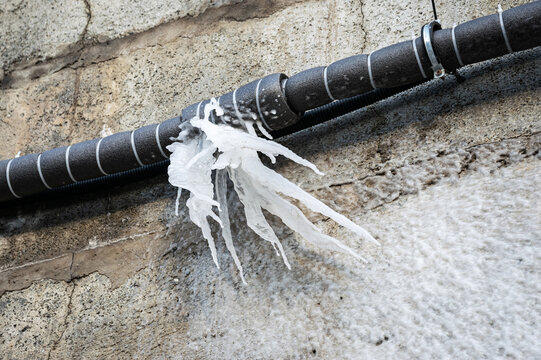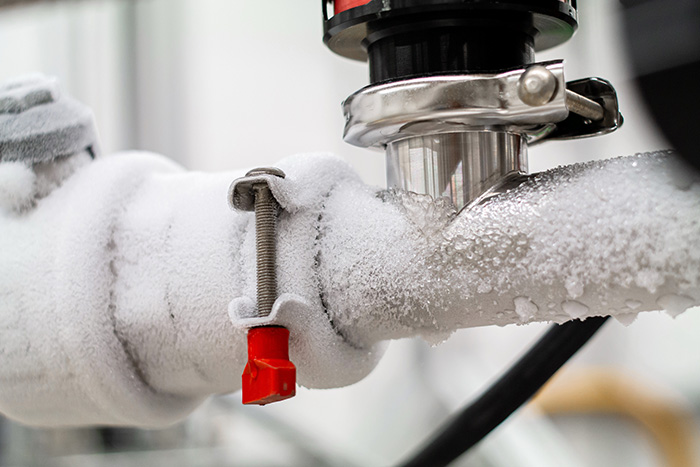Ways to Avoid Frozen Plumbing in Winter: Expert Advice
Ways to Avoid Frozen Plumbing in Winter: Expert Advice
Blog Article
What are your opinions regarding How to Prevent Your Pipes From Freezing?

Winter can wreak havoc on your pipes, particularly by freezing pipelines. Right here's just how to avoid it from taking place and what to do if it does.
Introduction
As temperatures decline, the risk of frozen pipes increases, potentially resulting in expensive fixings and water damage. Understanding exactly how to prevent icy pipes is crucial for homeowners in cold climates.
Prevention Tips
Shielding vulnerable pipelines
Wrap pipelines in insulation sleeves or use heat tape to secure them from freezing temperature levels. Focus on pipes in unheated or external locations of the home.
Home heating methods
Keep indoor spaces appropriately warmed, particularly locations with pipes. Open cabinet doors to permit warm air to flow around pipes under sinks.
Exactly how to recognize frozen pipelines
Look for lowered water flow from faucets, uncommon smells or sounds from pipes, and noticeable frost on subjected pipelines.
Long-Term Solutions
Structural modifications
Take into consideration rerouting pipelines far from outside wall surfaces or unheated locations. Include extra insulation to attics, basements, and crawl spaces.
Updating insulation
Purchase high-grade insulation for pipelines, attics, and walls. Appropriate insulation assists maintain consistent temperatures and decreases the threat of frozen pipelines.
Shielding Outdoor Plumbing
Garden pipes and outdoor taps
Disconnect and drain pipes garden hoses before winter season. Install frost-proof faucets or cover outside faucets with insulated caps.
Understanding Frozen Pipelines
What triggers pipelines to freeze?
Pipes freeze when exposed to temperatures listed below 32 ° F (0 ° C) for prolonged durations. As water inside the pipes ices up, it broadens, taxing the pipe walls and possibly causing them to break.
Dangers and problems
Icy pipes can result in water interruptions, residential property damages, and costly repair work. Ruptured pipes can flooding homes and create substantial architectural damage.
Signs of Frozen Pipes
Recognizing frozen pipelines early can avoid them from breaking.
What to Do If Your Pipes Freeze
Immediate activities to take
If you think icy pipes, maintain faucets open to soothe pressure as the ice melts. Utilize a hairdryer or towels soaked in hot water to thaw pipelines slowly.
Verdict
Stopping icy pipelines requires aggressive measures and quick reactions. By recognizing the causes, indications, and safety nets, homeowners can safeguard their plumbing throughout cold weather.
5 Ways to Prevent Frozen Pipes
Drain Outdoor Faucets and Disconnect Hoses
First, close the shut-off valve that controls the flow of water in the pipe to your outdoor faucet. Then, head outside to disconnect and drain your hose and open the outdoor faucet to allow the water to completely drain out of the line. Turn off the faucet when done. Finally, head back to the shut-off valve and drain the remaining water inside the pipe into a bucket or container. Additionally, if you have a home irrigation system, you should consider hiring an expert to clear the system of water each year.
Insulate Pipes
One of the best and most cost-effective methods for preventing frozen water pipes is to wrap your pipes with insulation. This is especially important for areas in your home that aren’t exposed to heat, such as an attic. We suggest using foam sleeves, which can typically be found at your local hardware store.
Keep Heat Running at 65
Your pipes are located inside your walls, and the temperature there is much colder than the rest of the house. To prevent your pipes from freezing, The Insurance Information Institute suggests that you keep your home heated to at least 65 degrees, even when traveling. You may want to invest in smart devices that can keep an eye on the temperature in your home while you’re away.
Leave Water Dripping
Moving water — even a small trickle — can prevent ice from forming inside your pipes. When freezing temps are imminent, start a drip of water from all faucets that serve exposed pipes. Leaving a few faucets running will also help relieve pressure inside the pipes and help prevent a rupture if the water inside freezes.
Open Cupboard Doors
Warm your kitchen and bathroom pipes by opening cupboards and vanities. You should also leave your interior doors ajar to help warm air circulate evenly throughout your home.

As a keen person who reads about Helpful Tips to Prevent Frozen Pipes this Winter, I figured sharing that topic was sensible. You should take the opportunity to promote this blog post if you enjoyed reading it. I praise you for being here. Don't forget to come by our site back soon.
Quote Report this page